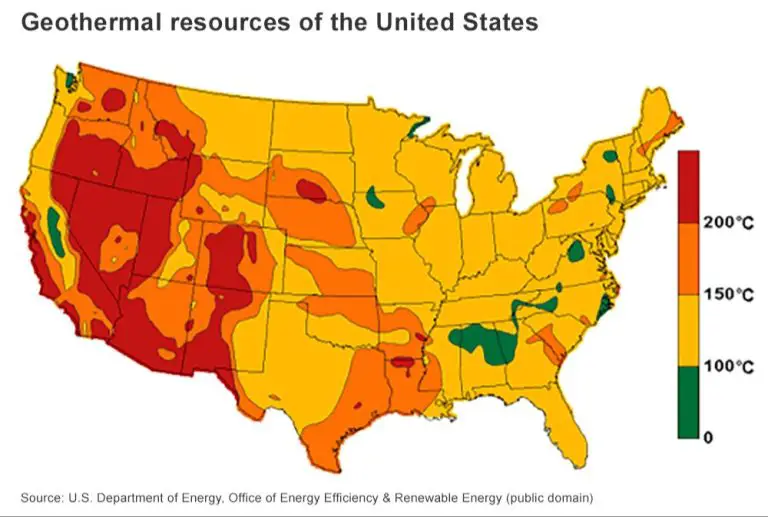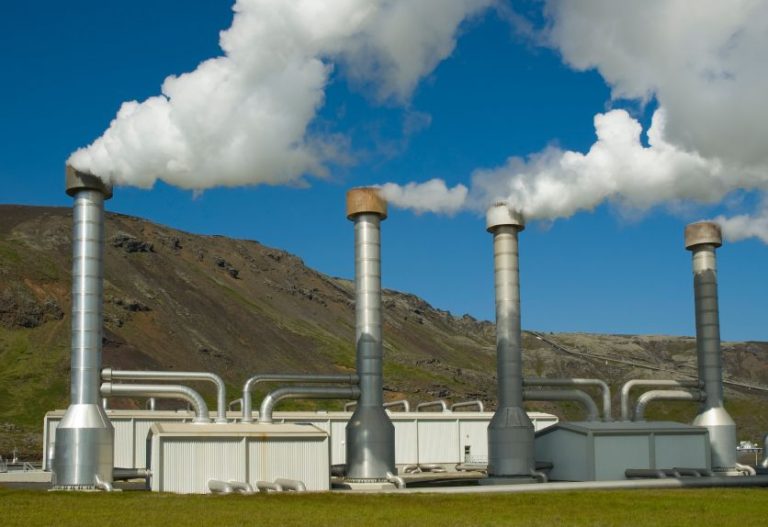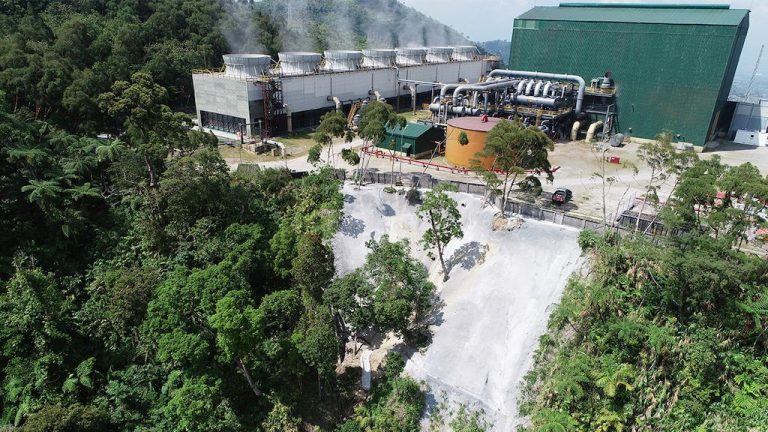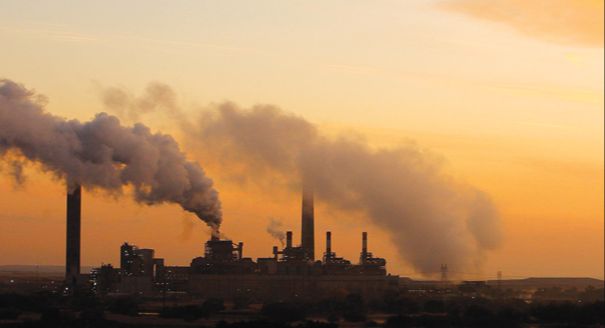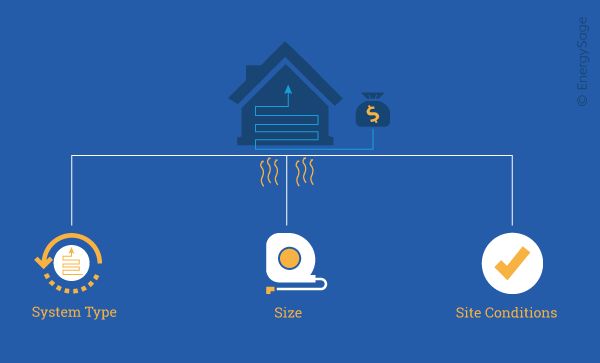What Is Geothermal Energy Produced By Quizlet?
What is Geothermal Energy?
Geothermal energy is heat energy generated and stored within the Earth (Geothermal). The word geothermal comes from the Greek words geo (earth) and therme (heat). Geothermal energy is considered a renewable energy source because the water is replenished by rainfall and the heat is continuously produced by the Earth’s internal processes (https://www.eia.gov/energyexplained/geothermal/).
At the core, the Earth’s temperature can reach over 7,000°F (4,000°C). This heat is produced by the slow decay of radioactive particles, residual heat from the planet’s formation, and heat produced by the continuous gravitational compression of the Earth (Geothermal). The high temperatures in the Earth’s core create molten rock (magma), which heats underground water and creates hot water and steam reservoirs (https://www.twi-global.com/technical-knowledge/faqs/geothermal-energy).
Geothermal energy is considered a clean, renewable source of energy because it does not generate greenhouse gas emissions or toxic byproducts. It provides constant baseload power not subject to fluctuations like wind and solar power. Geothermal plants have average availabilities of 90-99% compared to around 30% for wind and solar plants (https://www.twi-global.com/technical-knowledge/faqs/geothermal-energy).
How Geothermal Energy is Produced
Geothermal energy is produced by harnessing heat from underground reservoirs located deep beneath the Earth’s surface. These reservoirs contain hot water and steam that have been heated by the Earth’s natural internal heat. Wells are drilled into these reservoirs to bring the hot water and steam to the surface.
The hot water and steam from geothermal reservoirs are then used to power a turbine or heat exchanger system to generate electricity. There are three main types of geothermal power plants used for electricity production:
- Dry steam plants use steam piped directly from a geothermal reservoir to turn the turbines. The first geothermal power plant opened at Larderello in Italy in 1904 was this type.
- Flash steam plants take high-pressure hot water from deep inside the Earth and convert it to steam to drive the turbines. When the steam cools, it condenses to water and is injected back into the ground to be reheated.
- Binary cycle plants pass the hot water through heat exchangers to heat a secondary fluid with a lower boiling point. This causes the secondary fluid to flash to vapor, which then drives the turbines. The water and condensed steam are then injected back into the ground.
The spinning turbines drive generators that convert the mechanical energy into electricity. In this way, the natural heat and fluids from geothermal reservoirs deep underground are harnessed and converted into renewable electricity.
For more details see: https://www.energy.gov/eere/geothermal/electricity-generation
Types of Geothermal Power Plants
There are three main types of geothermal power plants used for electricity generation: dry steam, flash steam, and binary cycle. Each type uses geothermal energy in slightly different ways to turn turbines and generate electricity.
According to sources like the U.S. Department of Energy and Energy Information Administration, the three types of geothermal plants are:
Dry Steam Power Plants
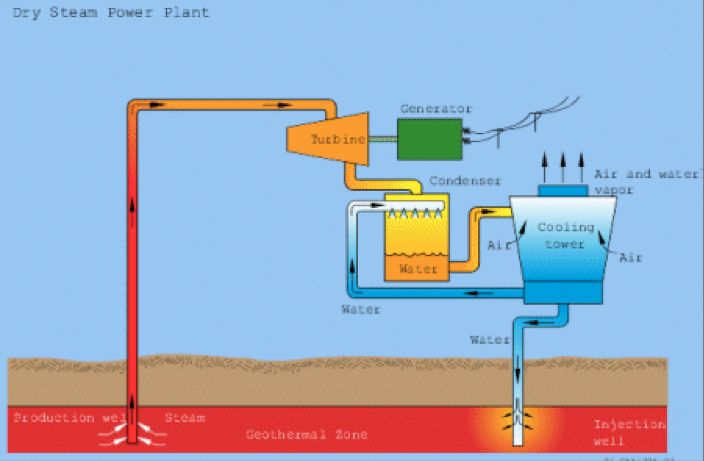
These plants use steam from geothermal reservoirs to directly turn turbine generators. The first geothermal power plant was a dry steam plant built in Italy in 1904. Dry steam resources are rare and only found in places with naturally occurring geothermal steam like The Geysers in California.
Flash Steam Power Plants
Flash steam plants take high pressure hot water from deep inside the earth and convert it to steam to drive turbine generators. When the hot water is pumped to the surface, the drop in pressure causes it to vaporize into steam. Flash steam plants are the most common geothermal power plant today.
Binary Cycle Power Plants
These plants take moderate-temperature to low-temperature water from geothermal reservoirs and use it to heat a separate fluid with a much lower boiling point, called the “working fluid.” This causes the working fluid to flash to vapor which then drives the turbines. Binary cycle plants are able to make use of lower temperature geothermal resources.
Geothermal Energy Usage
Geothermal energy currently provides a small but significant portion of the world’s energy supply. In the United States, geothermal power plants produced about 17 billion kilowatt-hours of electricity in 2022, accounting for around 0.4% of total utility-scale electricity generation (1). The Western United States is the primary location for geothermal energy production in the country.
Globally, the installed capacity of geothermal power plants was around 16 gigawatts in 2021, generating roughly 90 terawatt-hours of electricity annually. This met approximately 0.3% of global electricity demand that year (2). Countries like the United States, Indonesia, Turkey and New Zealand lead geothermal electricity production worldwide.
In addition to electricity generation, geothermal energy has a wide variety of direct-use applications like space heating and cooling, food preparation, industrial processes, and more. The global capacity for geothermal direct heating was estimated at 82 GWth in 2020, with 78 countries using direct geothermal energy applications (3).
While geothermal energy makes up a small portion of global energy use currently, capacity and generation have been growing steadily in recent decades. The global geothermal power market size was valued at $4.6 billion in 2020 and is projected to reach nearly $6.8 billion by 2026, reflecting a compound annual growth rate of 6.3% (4). With its reliability as a baseload renewable resource and potential in heating applications, geothermal seems poised for continued expansion worldwide.
(1) https://www.eia.gov/energyexplained/geothermal/use-of-geothermal-energy.php
(2) https://css.umich.edu/publications/factsheets/energy/geothermal-energy-factsheet
(3) International Geothermal Association, 2020 Geothermal Power: International Market Overview
Geothermal Energy Pros
Geothermal energy has several key benefits that make it an attractive renewable energy source. Some of the main advantages of geothermal power include:
Sustainability: Geothermal energy is considered a renewable resource because the heat emanating from the Earth’s interior is essentially limitless. The underground reservoirs from which geothermal power is derived can last for hundreds or even thousands of years if managed properly (Source).
Reliability: Geothermal power plants can operate continuously without interruption, as the Earth’s internal heat is always available. Geothermal energy has very high capacity factors of over 90%, providing constant and reliable electricity generation (Source).
Cost Effectiveness: Although upfront costs for geothermal plants are relatively high, the long-term operating costs are very low. Geothermal energy does not require fuel, so operational costs mainly involve maintenance and repairs. The levelized cost is competitive with conventional sources (Source).
Cons of Geothermal Energy
While geothermal energy has many advantages, there are some drawbacks to consider:
High upfront costs – Drilling geothermal wells and installing the power plant equipment can be expensive, with costs often ranging from $2-5 million. The initial investment required is higher than other renewable energy sources like solar or wind (Solar Reviews).
Location limitations – Geothermal plants need to be built near geothermal reservoirs in tectonically active areas, which limits where they can be located. Suitable sites are not available everywhere (TWI).
Surface instability – Drilling geothermal wells can sometimes lead to increased seismic activity or small earthquakes near the site. Proper precautionary measures need to be taken.
Sustainability concerns – Large, high temperature geothermal systems can deplete if excess heat is extracted over long periods. Careful reservoir management is required for long-term sustainability.
Land subsidence – Removing geothermal fluids from underground reservoirs can cause surrounding land to subside or sink slightly over time if not managed properly.
Hydrothermal fluids – Geothermal plants using hydrothermal fluids produce some carbon dioxide emissions from non-condensable gases. However, emissions are much lower per kWh than fossil fuel plants.
Geothermal Energy and the Environment
Geothermal power plants have relatively low emissions compared to fossil fuel plants. However, geothermal sites can release carbon dioxide and toxic chemicals such as mercury, arsenic, and boron that are naturally occurring in the surrounding rocks and steam. According to the UCSUSA, geothermal plants emit on average about 5% of the carbon dioxide of a relatively clean natural gas power plant. The carbon emissions come from either the geothermal reservoir itself or from pumping hot water up to the surface. These emissions can be minimized by installing abatement technologies.
There are also concerns that geothermal power production may induce small earthquakes through water injection and extraction. However, these induced seismic events are generally small in magnitude. With proper monitoring, the risk of inducing larger earthquakes can be minimized.
Geothermal power plants require a large amount of land area. Access roads and pipelines need to be constructed, which can negatively impact natural habitats and wildlife. Careful siting of geothermal plants can help mitigate habitat loss. Overall, geothermal energy has lower land use requirements than other renewable energy sources.
According to the EIA, binary cycle geothermal plants, which do not expose the reservoir water to the atmosphere, produce near zero emissions. Closed-loop geothermal heating and cooling systems also result in virtually no emissions. With proper siting and management, geothermal energy can provide low-emission renewable baseload power.
Notable Geothermal Sites
Some of the most famous and largest geothermal sites in the world are located in Iceland, New Zealand, and Japan. Iceland in particular is well known for its abundant geothermal resources. The country generates over 25% of its electricity from geothermal sources. Major geothermal power plants in Iceland include the Hellisheiði Power Station, which is the world’s second largest geothermal plant with a capacity of 303 MW (source).
New Zealand also generates a significant amount of its energy from geothermal sources. Major geothermal areas in New Zealand include the Taupo Volcanic Zone, which has 13 geothermal power stations. The largest is the Wairakei power station with a capacity of 131 MW. In total, geothermal power accounts for approximately 17% of New Zealand’s electricity generation (source).
Japan is the third largest producer of geothermal energy in the world. Major geothermal plants include the Hatchobaru plant on the island of Kyushu, which has a capacity of 110 MW. Japan has over 20 geothermal plants located near volcanic areas throughout the country (source).
Future of Geothermal
Geothermal energy has significant potential for growth in the coming years. According to a study by the Massachusetts Institute of Technology (MIT), geothermal power capacity in the United States could grow 26-fold by 2050 (https://energy.mit.edu/research/future-geothermal-energy/). This growth will be driven by technological innovations that make geothermal power more affordable and expandable to new geothermal sites.
One major focus of geothermal technology development is Enhanced Geothermal Systems (EGS), which use hydraulic stimulation to extract heat from hot but dry underground areas with no natural geothermal activity. EGS has the potential to greatly expand geothermal energy beyond traditional geothermal reservoirs (https://e360.yale.edu/features/can-geothermal-power-play-a-key-role-in-the-energy-transition).
Advances in drilling technology are also helping tap geothermal resources in hard-to-reach areas. Higher temperature drilling tools and improved drilling fluids allow deeper drilling and accessing of superhot geothermal reservoirs (https://www.nrel.gov/news/features/2023/full-steam-ahead-unearthing-the-power-of-geothermal.html).
The growth of geothermal is expected to accelerate as costs continue to decline. The IEA predicts geothermal power costs could decrease by up to 16% by 2025 from innovations in drilling, plant design and operating practices.
Quiz on Geothermal Energy
Test your knowledge on geothermal energy by answering the questions below:
1. What causes the heat under the Earth’s surface that can be tapped for geothermal energy?
A. Friction from tectonic plate movement
B. Pressure from the Earth’s core
C. Decay of radioactive elements
D. Magma churning below volcanoes
2. Which type of geothermal power plant uses hot water from reservoirs near the Earth’s surface?
A. Flash steam power plants
B. Dry steam power plants
C. Binary cycle power plants
D. Enhanced geothermal systems
3. True or false: Geothermal energy can only be produced at specific sites.
A. True
B. False
4. What emission is geothermal energy production responsible for?
A. Carbon dioxide
B. Sulfur dioxide
C. Methane
D. Nitrous oxide
5. How was most of the Earth’s geothermal energy formed?
A. From the planet’s original formation
B. From radioactive decay
C. From the Moon’s gravitational pull
D. From asteroid impacts
Check your answers below against the key to see how you did!
1. B 2. B 3. A 4. B 5. B

